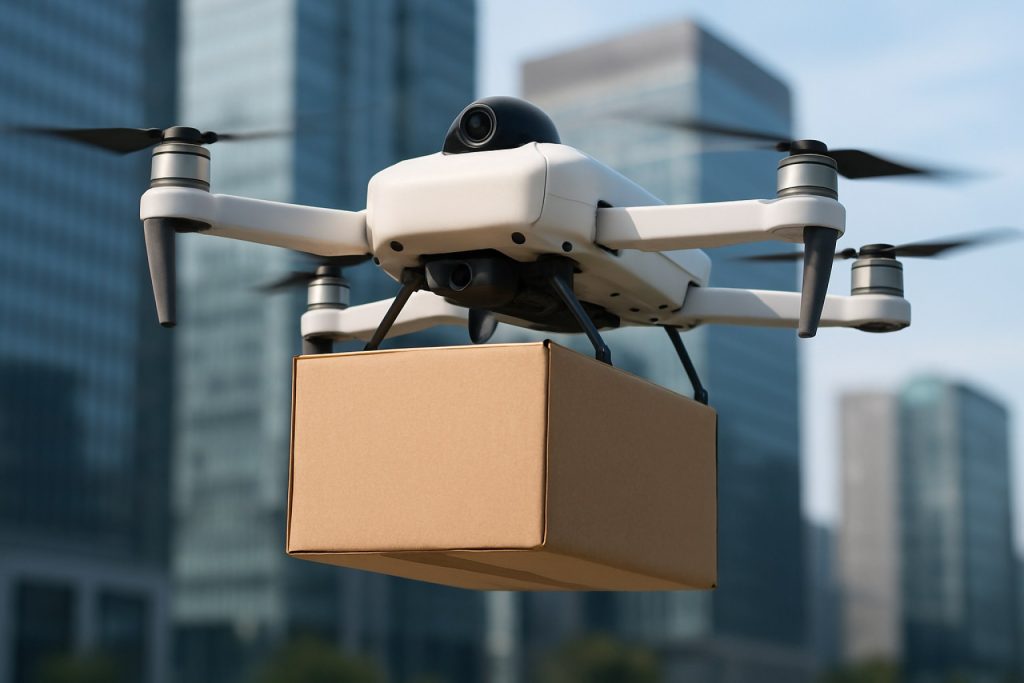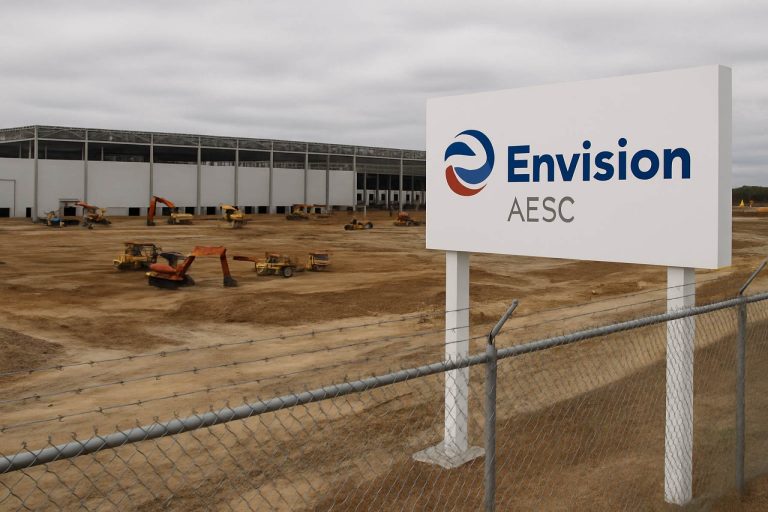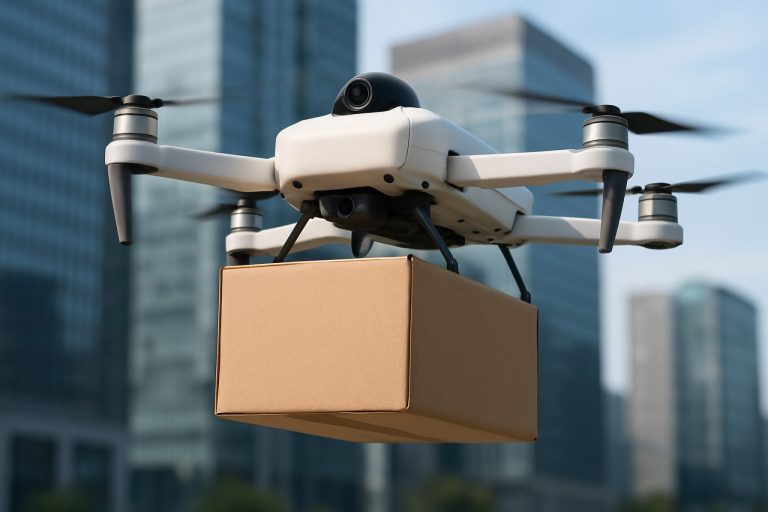
2025 Market Report: Object Detection in Autonomous Drone Logistics—Trends, Growth Projections, and Strategic Insights for the Next 5 Years
- Executive Summary & Market Overview
- Key Technology Trends in Object Detection for Drone Logistics
- Competitive Landscape: Leading Players & Emerging Innovators
- Market Growth Forecasts (2025–2030): CAGR, Revenue, and Adoption Rates
- Regional Analysis: North America, Europe, Asia-Pacific, and Rest of World
- Challenges and Opportunities: Regulatory, Technical, and Market Dynamics
- Future Outlook: Strategic Recommendations and Investment Priorities
- Sources & References
Executive Summary & Market Overview
The object detection market within autonomous drone logistics is poised for significant growth in 2025, driven by rapid advancements in artificial intelligence (AI), computer vision, and sensor technologies. Object detection refers to the automated identification and localization of physical objects—such as vehicles, people, infrastructure, and obstacles—within a drone’s operational environment. This capability is foundational for enabling safe navigation, collision avoidance, and efficient delivery operations in logistics applications.
The global drone logistics and transportation market is projected to reach USD 32.1 billion by 2027, growing at a CAGR of 21.5% from 2022, with object detection technologies representing a critical enabler for this expansion MarketsandMarkets. In 2025, the integration of advanced object detection systems is expected to accelerate, as regulatory bodies increasingly mandate robust sense-and-avoid capabilities for beyond-visual-line-of-sight (BVLOS) operations Federal Aviation Administration (FAA). This regulatory push is fostering innovation among technology providers and logistics operators alike.
Key industry players—including DJI, UPS Flight Forward, and Wing (Alphabet)—are investing heavily in AI-powered object detection to enhance operational safety and efficiency. These systems leverage a combination of high-resolution cameras, LiDAR, radar, and deep learning algorithms to detect and classify objects in real time, even in complex urban or industrial environments. The adoption of edge computing is further enabling drones to process sensor data onboard, reducing latency and improving decision-making during flight Gartner.
The market is also witnessing increased collaboration between drone manufacturers, logistics companies, and AI startups to develop interoperable and scalable object detection solutions. For example, partnerships between Matternet and healthcare providers have demonstrated the viability of autonomous drone delivery in urban settings, relying on advanced object detection for safe navigation U.S. Food & Drug Administration (FDA).
In summary, 2025 will mark a pivotal year for object detection in autonomous drone logistics, as technological maturity, regulatory clarity, and commercial demand converge to drive widespread adoption and market growth.
Key Technology Trends in Object Detection for Drone Logistics
Object detection technologies are at the core of autonomous drone logistics, enabling drones to perceive, interpret, and interact with their environments safely and efficiently. In 2025, several key technology trends are shaping the evolution of object detection systems for drone-based logistics operations.
- Edge AI and Onboard Processing: The integration of advanced edge AI chips allows drones to process visual data in real time without relying on cloud connectivity. This reduces latency and enhances operational reliability, especially in remote or bandwidth-constrained environments. Companies like NVIDIA and Qualcomm are leading the development of compact, energy-efficient processors tailored for drone applications.
- Multimodal Sensor Fusion: Object detection is increasingly leveraging data from multiple sensors—such as RGB cameras, LiDAR, thermal imagers, and radar—to improve accuracy and robustness. Sensor fusion enables drones to detect and classify objects under challenging conditions, such as low light, fog, or cluttered urban environments. Open Robotics and Intel are actively supporting open-source frameworks and hardware for sensor integration.
- Deep Learning and Transformer Models: The adoption of transformer-based neural networks and advanced convolutional neural networks (CNNs) is significantly improving object detection performance. These models offer higher accuracy in identifying small, partially occluded, or fast-moving objects, which is critical for safe navigation and package delivery. Research from Google AI and Meta AI Research is driving innovation in this area.
- Real-Time 3D Mapping and SLAM: Simultaneous Localization and Mapping (SLAM) technologies are being enhanced with real-time 3D object detection, allowing drones to build detailed maps of their surroundings while identifying dynamic obstacles. This is essential for precise landing, collision avoidance, and route optimization in complex logistics scenarios. SLAMcore and Hexagon are notable contributors to commercial SLAM solutions.
- Regulatory-Driven Safety Features: As regulatory bodies like the Federal Aviation Administration (FAA) and European Union Aviation Safety Agency (EASA) tighten requirements for beyond-visual-line-of-sight (BVLOS) operations, object detection systems are incorporating redundancy, fail-safes, and explainable AI to meet certification standards.
These trends collectively enable more reliable, scalable, and safe autonomous drone logistics, supporting the sector’s rapid growth and integration into mainstream supply chains in 2025.
Competitive Landscape: Leading Players & Emerging Innovators
The competitive landscape for object detection in autonomous drone logistics is rapidly evolving, shaped by established technology giants, specialized drone manufacturers, and a wave of emerging AI startups. As of 2025, the market is characterized by intense R&D activity, strategic partnerships, and a focus on integrating advanced computer vision with real-time data processing to enhance safety, efficiency, and scalability in logistics operations.
Leading Players
- DJI remains a dominant force, leveraging its extensive hardware ecosystem and proprietary vision systems. DJI’s Matrice series, equipped with advanced obstacle avoidance and object recognition, is widely adopted in logistics trials and commercial deployments.
- Intel continues to push the envelope with its RealSense technology, providing robust depth sensing and AI-powered object detection modules that are integrated into both its own drone platforms and those of partners.
- NVIDIA is a key enabler, supplying Jetson edge AI modules that power real-time object detection and classification in drones. NVIDIA’s partnerships with logistics firms and drone OEMs have accelerated the deployment of deep learning models in the field.
- Parrot has carved a niche in commercial drone logistics, offering open-source SDKs and integrating third-party AI solutions for enhanced object detection and situational awareness.
Emerging Innovators
- Skydio is recognized for its autonomous navigation and AI-driven object detection, with its drones being piloted in last-mile delivery and warehouse automation scenarios.
- senseFly, a subsidiary of AgEagle, is innovating with lightweight, fixed-wing drones equipped with machine learning-based object detection for rural and remote logistics.
- Percepto specializes in autonomous drone-in-a-box solutions, integrating proprietary vision algorithms for industrial site logistics and inspection.
- AI startups such as Scale AI and AnyVision are providing annotation, model training, and edge deployment services, enabling rapid iteration and customization of object detection models for logistics use cases.
Strategic collaborations between logistics providers, drone OEMs, and AI software vendors are accelerating innovation. The competitive edge increasingly hinges on the ability to deliver high-accuracy, low-latency object detection in diverse and dynamic environments, with regulatory compliance and data security emerging as critical differentiators in 2025.
Market Growth Forecasts (2025–2030): CAGR, Revenue, and Adoption Rates
The object detection segment within autonomous drone logistics is poised for robust growth between 2025 and 2030, driven by escalating demand for real-time, accurate navigation and delivery in urban and industrial environments. According to projections from MarketsandMarkets, the global drone logistics and transportation market is expected to reach USD 32.1 billion by 2027, with object detection technologies constituting a significant share due to their critical role in collision avoidance, route optimization, and payload security.
From 2025 onward, the compound annual growth rate (CAGR) for object detection solutions in drone logistics is anticipated to exceed 18%, outpacing the broader drone logistics market. This acceleration is attributed to rapid advancements in AI-powered computer vision, sensor fusion, and edge computing, which are enabling drones to interpret complex environments with higher precision. Grand View Research highlights that the integration of deep learning algorithms and LiDAR-based object detection is expected to become standard in commercial drone fleets by 2027, further boosting adoption rates.
Revenue generated from object detection modules and software is projected to surpass USD 4.5 billion by 2030, as logistics providers increasingly invest in upgrading their drone fleets to comply with evolving regulatory standards and to enhance operational safety. Adoption rates are particularly high in sectors such as e-commerce, healthcare, and industrial supply chain management, where precision and reliability are paramount. For instance, UPS and DHL have both expanded pilot programs utilizing drones equipped with advanced object detection for last-mile delivery and medical supply transport.
- By 2025, it is estimated that over 60% of new commercial delivery drones will feature multi-modal object detection systems, integrating visual, infrared, and radar sensors.
- Adoption rates in North America and Europe are expected to lead, with Asia-Pacific rapidly catching up due to urbanization and supportive regulatory frameworks.
- Key market drivers include the need for autonomous navigation in dense urban airspaces and the push for contactless delivery solutions post-pandemic.
Overall, the period from 2025 to 2030 will see object detection technologies become a linchpin in the evolution of autonomous drone logistics, underpinning both market expansion and the realization of fully autonomous, scalable delivery networks.
Regional Analysis: North America, Europe, Asia-Pacific, and Rest of World
The regional landscape for object detection in autonomous drone logistics is evolving rapidly, with distinct trends and adoption rates across North America, Europe, Asia-Pacific, and the Rest of the World. In 2025, these regions are characterized by varying regulatory environments, technological maturity, and market drivers, shaping the deployment and advancement of object detection technologies in drone-based logistics.
- North America: The United States and Canada lead in the integration of advanced object detection systems within autonomous drone logistics, driven by robust investments in AI, machine learning, and sensor technologies. The Federal Aviation Administration’s (FAA) progressive regulatory framework has enabled pilot programs and commercial deployments, particularly in last-mile delivery and warehouse automation. Major logistics and e-commerce players, such as UPS and Amazon, are leveraging sophisticated object detection to enhance safety and efficiency, with a focus on urban and suburban environments. According to Grand View Research, North America accounted for over 35% of the global drone logistics market share in 2024, a figure expected to grow as object detection capabilities mature.
- Europe: Europe’s market is shaped by stringent privacy and safety regulations, but also by strong governmental support for drone innovation. The European Union Aviation Safety Agency (EASA) has established harmonized rules facilitating cross-border drone operations, spurring adoption in countries like Germany, France, and the UK. European logistics firms are investing in AI-powered object detection to comply with urban air mobility requirements and to support medical and industrial deliveries. DHL and Airbus are notable players piloting advanced object detection for route optimization and collision avoidance.
- Asia-Pacific: The Asia-Pacific region is witnessing the fastest growth, propelled by high e-commerce demand and government initiatives in countries such as China, Japan, and South Korea. China’s Civil Aviation Administration (CAAC) has relaxed certain drone operation rules, enabling large-scale trials by companies like JD.com and SF Express. These firms are deploying object detection technologies to navigate dense urban landscapes and complex airspaces. Mordor Intelligence projects Asia-Pacific to achieve a CAGR above 20% in drone logistics through 2025, with object detection as a key enabler.
- Rest of World: Adoption in Latin America, the Middle East, and Africa remains nascent but is gaining momentum, particularly in humanitarian logistics and remote area deliveries. Regulatory uncertainty and infrastructure challenges persist, but pilot projects—often supported by international organizations—are demonstrating the value of object detection for safe and reliable drone operations in diverse environments.
Overall, regional dynamics in 2025 reflect a convergence of regulatory progress, technological innovation, and market demand, with object detection emerging as a critical differentiator in the global autonomous drone logistics sector.
Challenges and Opportunities: Regulatory, Technical, and Market Dynamics
The integration of object detection technologies in autonomous drone logistics is rapidly transforming supply chain and delivery models, but it faces a complex landscape of regulatory, technical, and market challenges and opportunities as of 2025.
Regulatory Dynamics: The regulatory environment remains a significant hurdle. In 2025, agencies such as the Federal Aviation Administration (FAA) and the European Commission Directorate-General for Mobility and Transport are intensifying requirements for beyond-visual-line-of-sight (BVLOS) operations, mandating robust object detection and avoidance systems. Compliance with evolving standards, such as the EASA’s U-space framework, is both a challenge and an opportunity for technology providers to differentiate through certification and safety. However, regulatory fragmentation across regions complicates cross-border drone logistics, requiring adaptable object detection solutions.
Technical Challenges and Innovations: Object detection in drone logistics must contend with variable lighting, weather, and cluttered urban environments. Advances in AI-powered computer vision, such as those from NVIDIA and Intel, are improving real-time detection accuracy, but edge processing constraints and power consumption remain limiting factors. The need for lightweight, energy-efficient models is driving research into specialized hardware accelerators and federated learning approaches. Additionally, the integration of multi-sensor fusion—combining LiDAR, radar, and optical cameras—offers improved reliability but increases system complexity and cost.
Market Dynamics and Opportunities: The global drone logistics market is projected to reach $29.06 billion by 2027, with object detection technologies being a key enabler of growth (MarketsandMarkets). E-commerce giants like Amazon and logistics providers such as UPS are investing in proprietary object detection systems to enhance delivery safety and efficiency. Startups and established players alike are exploring partnerships to accelerate deployment and address gaps in urban and rural coverage. The opportunity lies in developing scalable, interoperable solutions that can adapt to diverse regulatory and operational environments, unlocking new business models such as autonomous last-mile delivery and inter-warehouse transport.
In summary, while regulatory uncertainty and technical complexity pose significant challenges, the rapid evolution of object detection technologies presents substantial opportunities for stakeholders in the autonomous drone logistics ecosystem in 2025.
Future Outlook: Strategic Recommendations and Investment Priorities
The future outlook for object detection in autonomous drone logistics is shaped by rapid advancements in artificial intelligence, sensor fusion, and regulatory frameworks. As the market matures in 2025, strategic recommendations and investment priorities are increasingly focused on enhancing operational reliability, scalability, and compliance with evolving airspace regulations.
Strategic Recommendations:
- Invest in Multi-Modal Sensor Integration: Companies should prioritize the integration of LiDAR, radar, and advanced computer vision systems to improve detection accuracy in diverse environments. Multi-modal sensor fusion addresses challenges such as poor visibility, dynamic obstacles, and complex urban landscapes, which are critical for safe and efficient drone logistics operations (NASA).
- Focus on Edge AI and Real-Time Processing: Deploying edge AI solutions enables drones to process object detection data locally, reducing latency and dependence on cloud connectivity. This is essential for real-time decision-making, especially in time-sensitive logistics applications (NVIDIA).
- Enhance Data Annotation and Synthetic Data Generation: Investment in high-quality annotated datasets and synthetic data generation tools will accelerate the training and validation of object detection algorithms, particularly for rare or hazardous scenarios (Datagen).
- Collaborate on Regulatory Compliance and Standardization: Engaging with regulatory bodies and industry consortia to shape standards for object detection performance and safety is crucial. Proactive compliance will facilitate smoother market entry and scalability (Federal Aviation Administration (FAA)).
Investment Priorities:
- R&D in Robust Perception Algorithms: Allocate capital to research in deep learning, sensor fusion, and adversarial robustness to ensure object detection systems can handle real-world variability and adversarial conditions (DeepMind).
- Scalable Testing and Simulation Platforms: Invest in digital twin and simulation environments to test object detection systems at scale, reducing the need for costly real-world trials (Unreal Engine).
- Strategic Partnerships: Form alliances with logistics providers, drone manufacturers, and AI technology firms to accelerate deployment and share risk in technology adoption (UPS).
In summary, the 2025 landscape for object detection in autonomous drone logistics will reward stakeholders who invest in robust, scalable, and compliant technologies, positioning themselves for leadership in a rapidly evolving market.
Sources & References
- MarketsandMarkets
- Wing (Alphabet)
- NVIDIA
- Qualcomm
- Open Robotics
- Google AI
- Meta AI Research
- SLAMcore
- Hexagon
- European Union Aviation Safety Agency (EASA)
- Parrot
- Skydio
- senseFly
- Percepto
- Scale AI
- AnyVision
- Grand View Research
- Amazon
- Airbus
- JD.com
- SF Express
- Mordor Intelligence
- European Commission Directorate-General for Mobility and Transport
- NASA
- DeepMind



